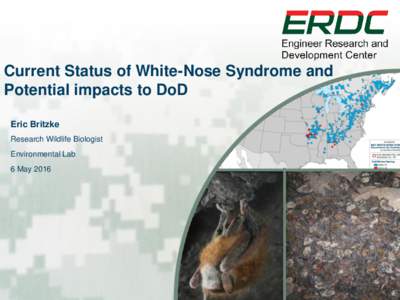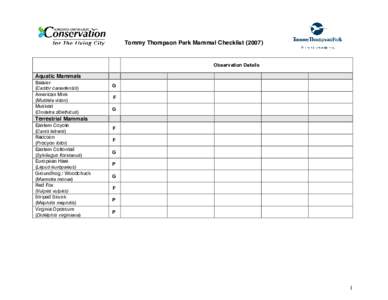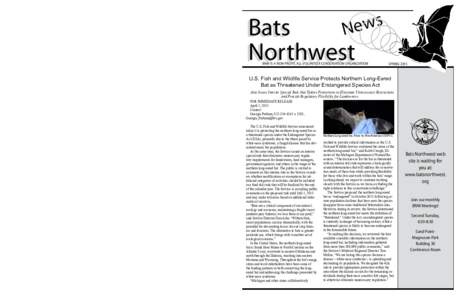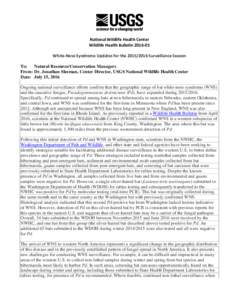<--- Back to Details
| First Page | Document Content | |
|---|---|---|
 Date: 2016-06-16 12:27:26Mouse-eared bats Bats Bats of the United States Vesper bats Bats of Canada Speleology White nose syndrome Virginia big-eared bat Little brown bat Eastern small-footed myotis Corynorhinus Pseudogymnoascus destructans |
Add to Reading List |
 | Tommy Thompson Park Mammal ChecklistObservation Details Aquatic Mammals BeaverDocID: 1rdJt - View Document |
 | Become a Bats Northwest Member Join us in the adventure to learn more about our bat neighbors!DocID: 1qA82 - View Document |
 | ARKive image GES143493 - Northern long-eared batDocID: 1qzIi - View Document |
 | National Wildlife Health Center Wildlife Health BulletinWhite-Nose Syndrome Updates for theSurveillance Season To: Natural Resource/Conservation Managers From: Dr. Jonathan Sleeman, Center Director, UDocID: 1qsFB - View Document |
 | Current Status of White-Nose Syndrome and Potential impacts to DoD Eric Britzke Research Wildlife Biologist Environmental Lab 6 May 2016DocID: 1pOK3 - View Document |
 Current Status of White-Nose Syndrome and Potential impacts to DoD Eric Britzke Research Wildlife Biologist Environmental Lab 6 May 2016
Current Status of White-Nose Syndrome and Potential impacts to DoD Eric Britzke Research Wildlife Biologist Environmental Lab 6 May 2016